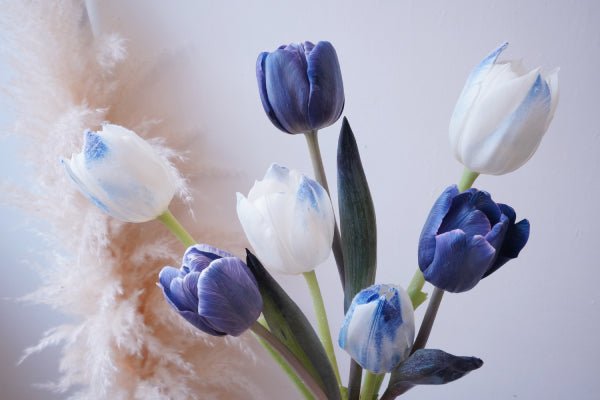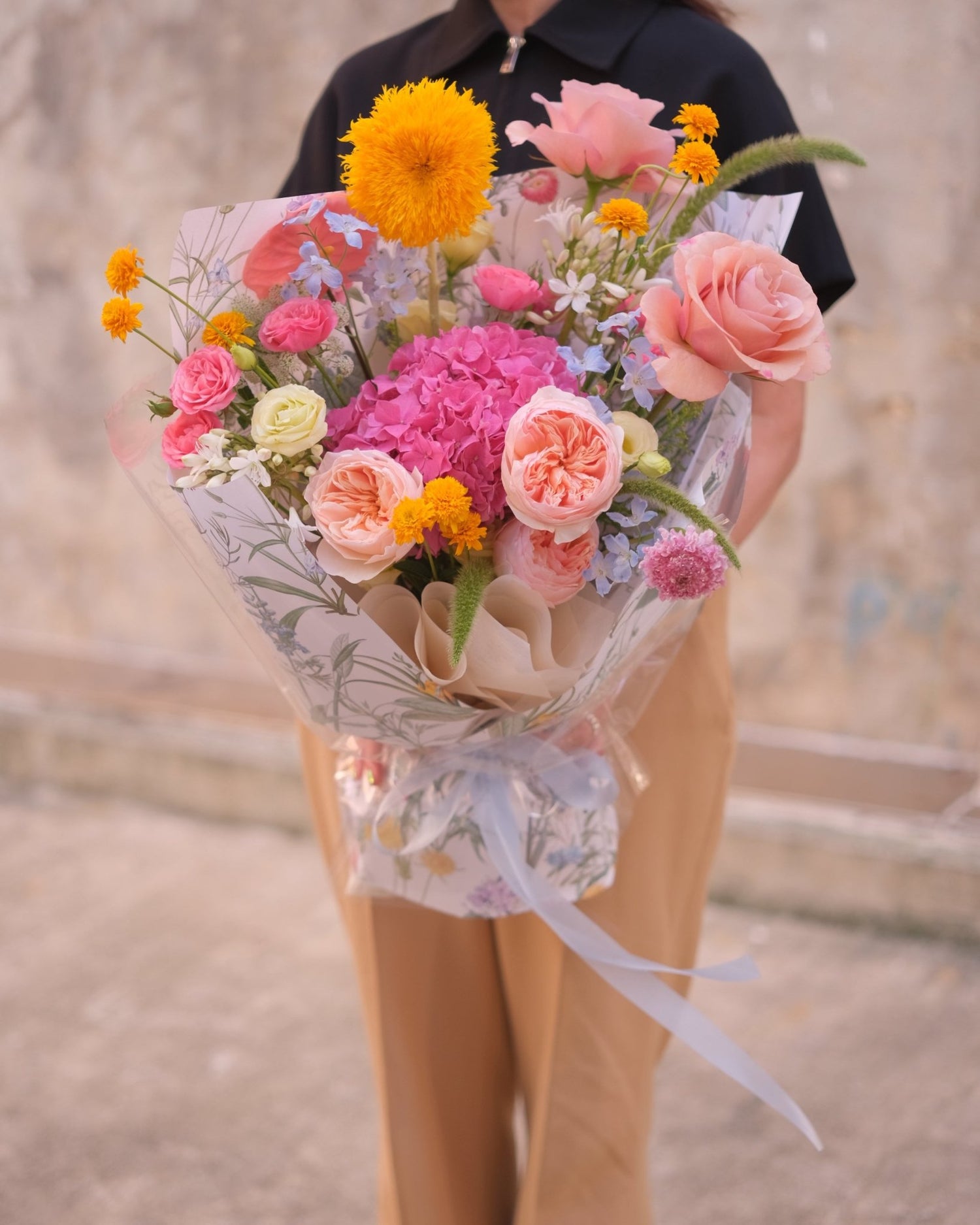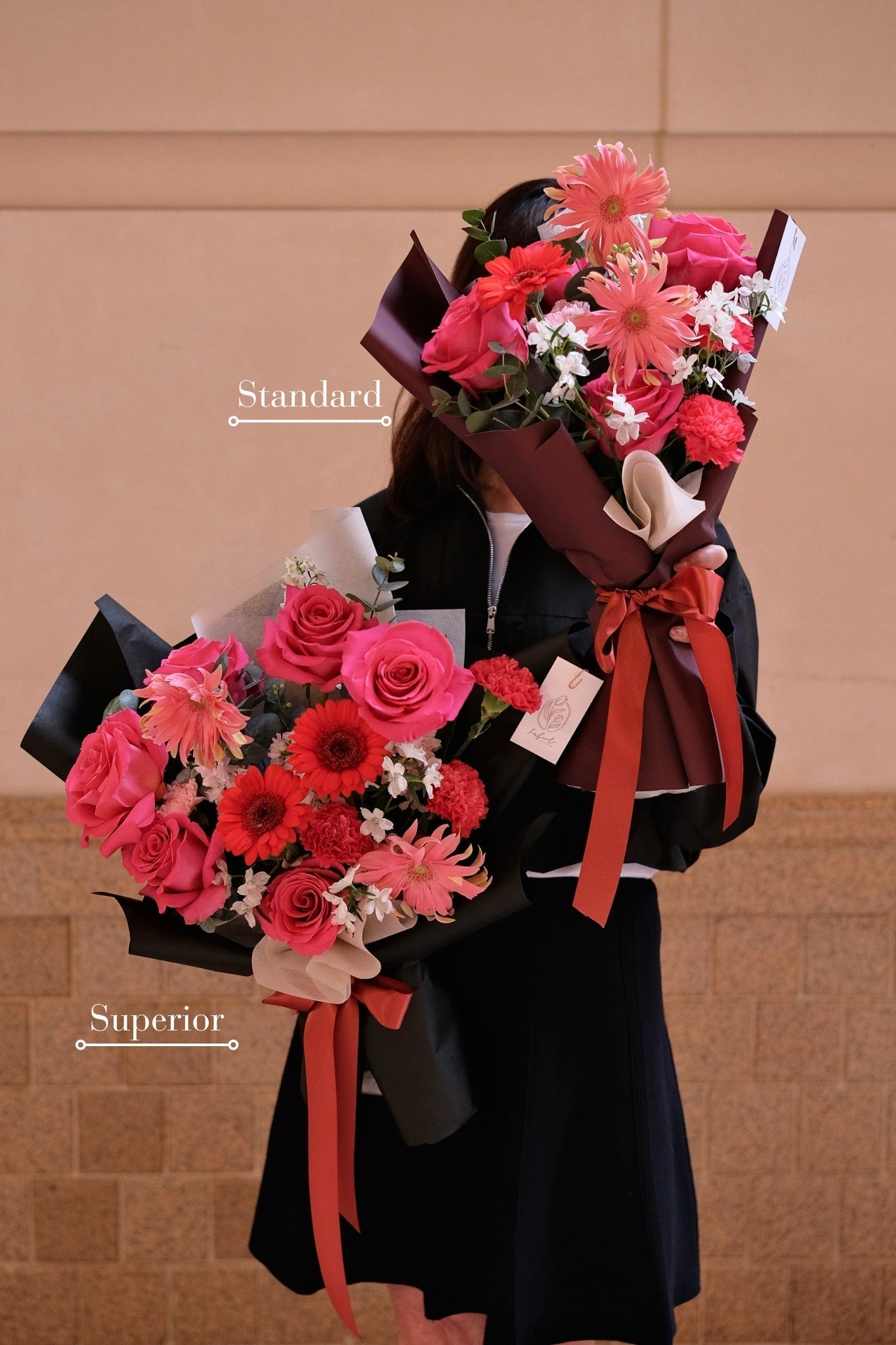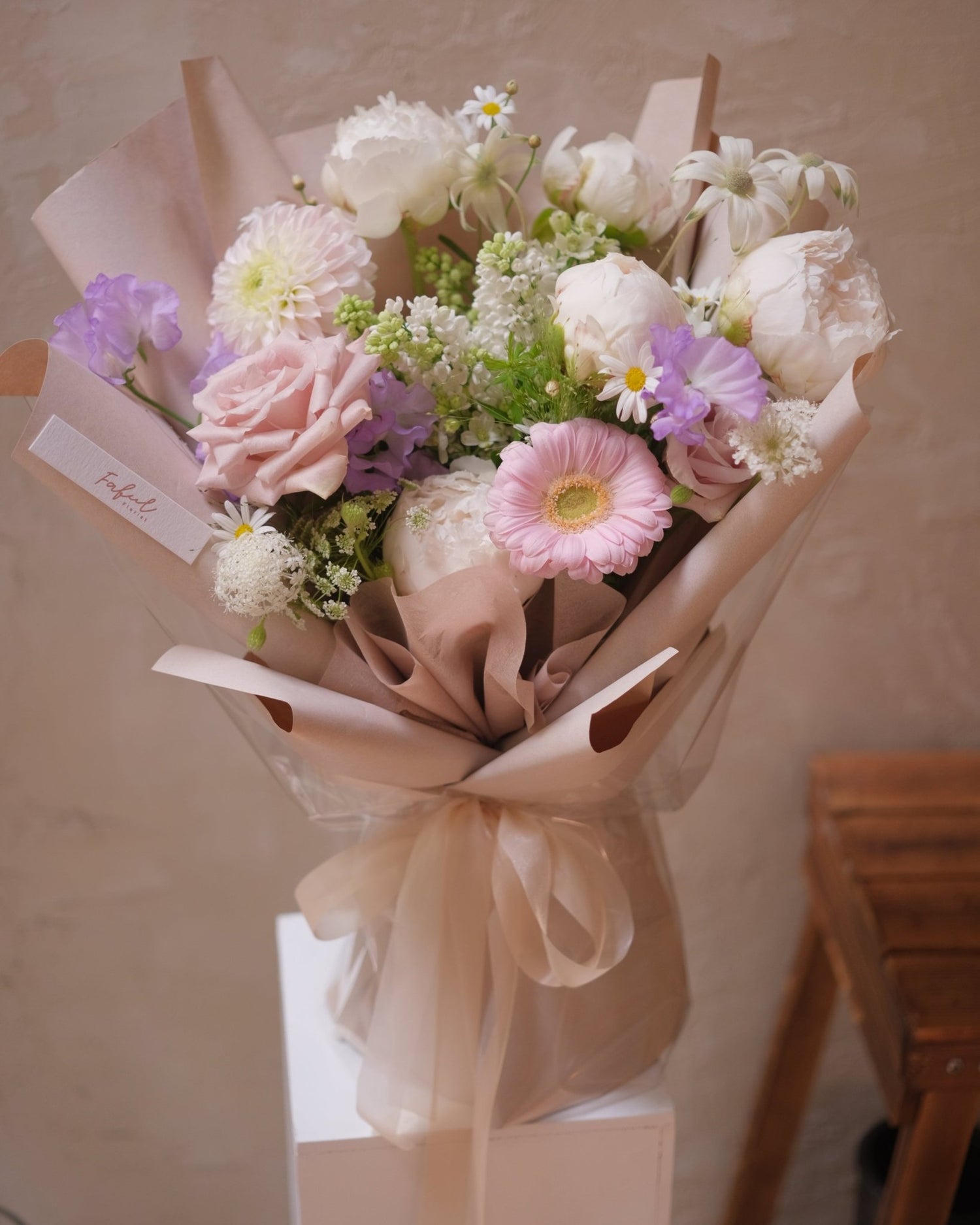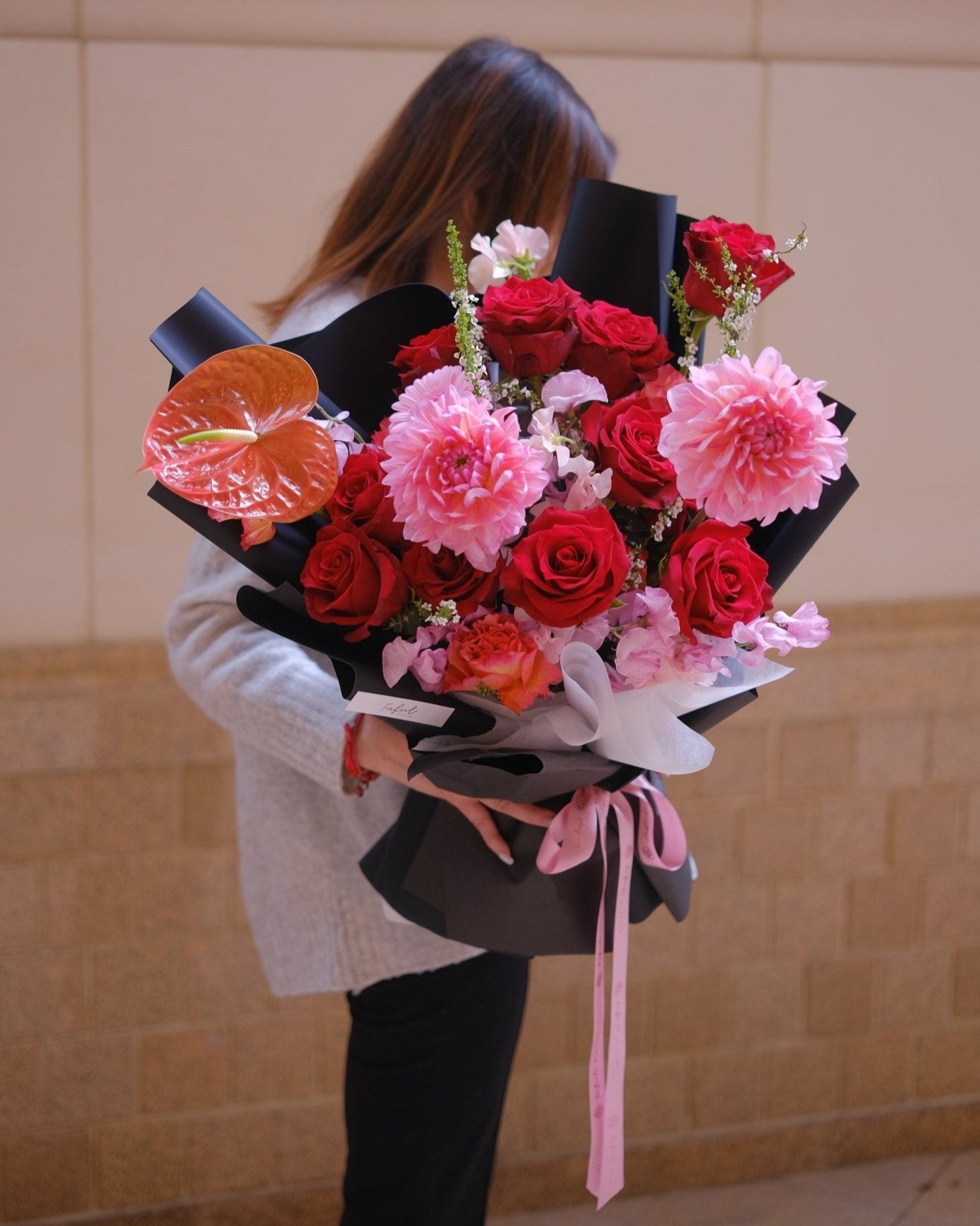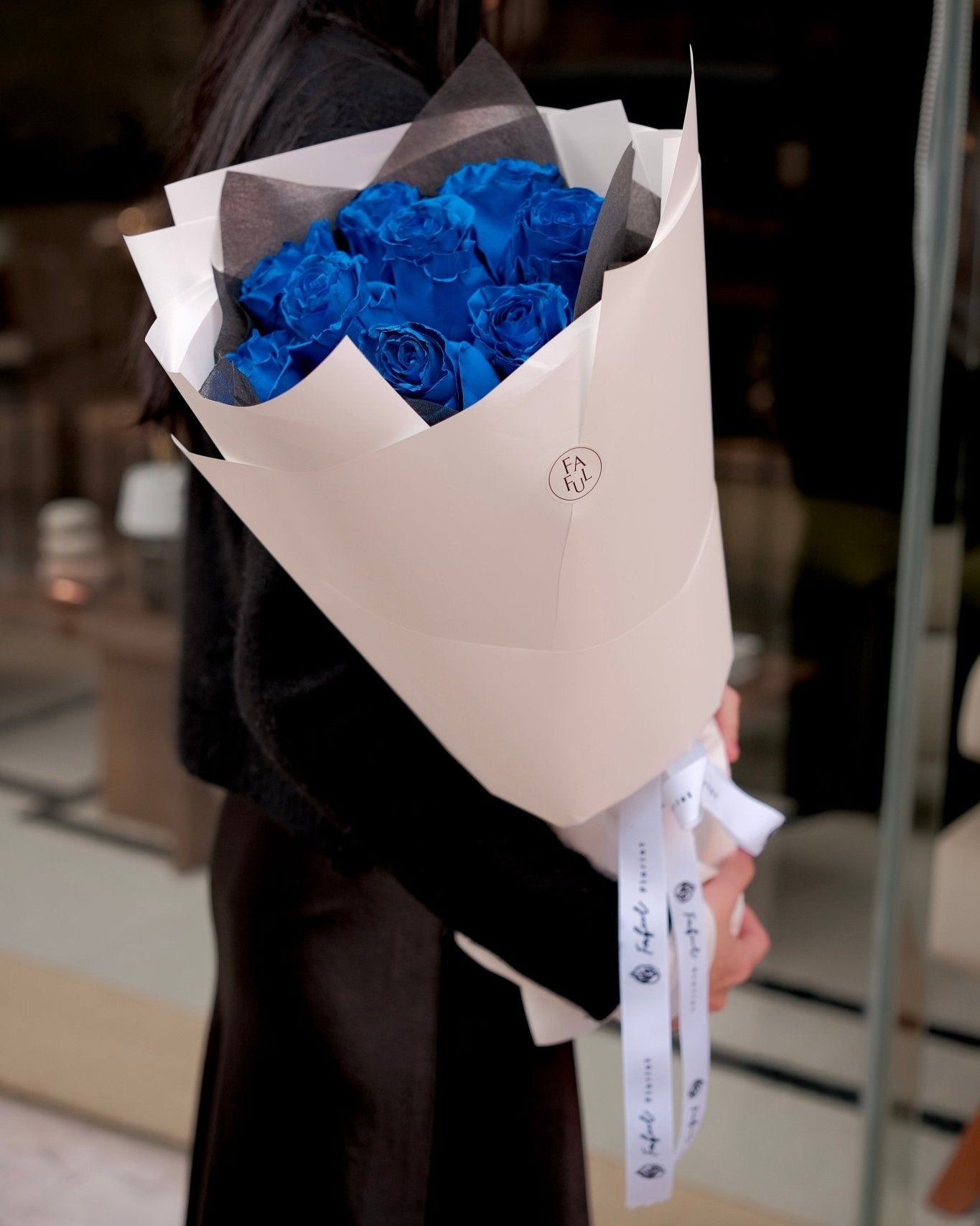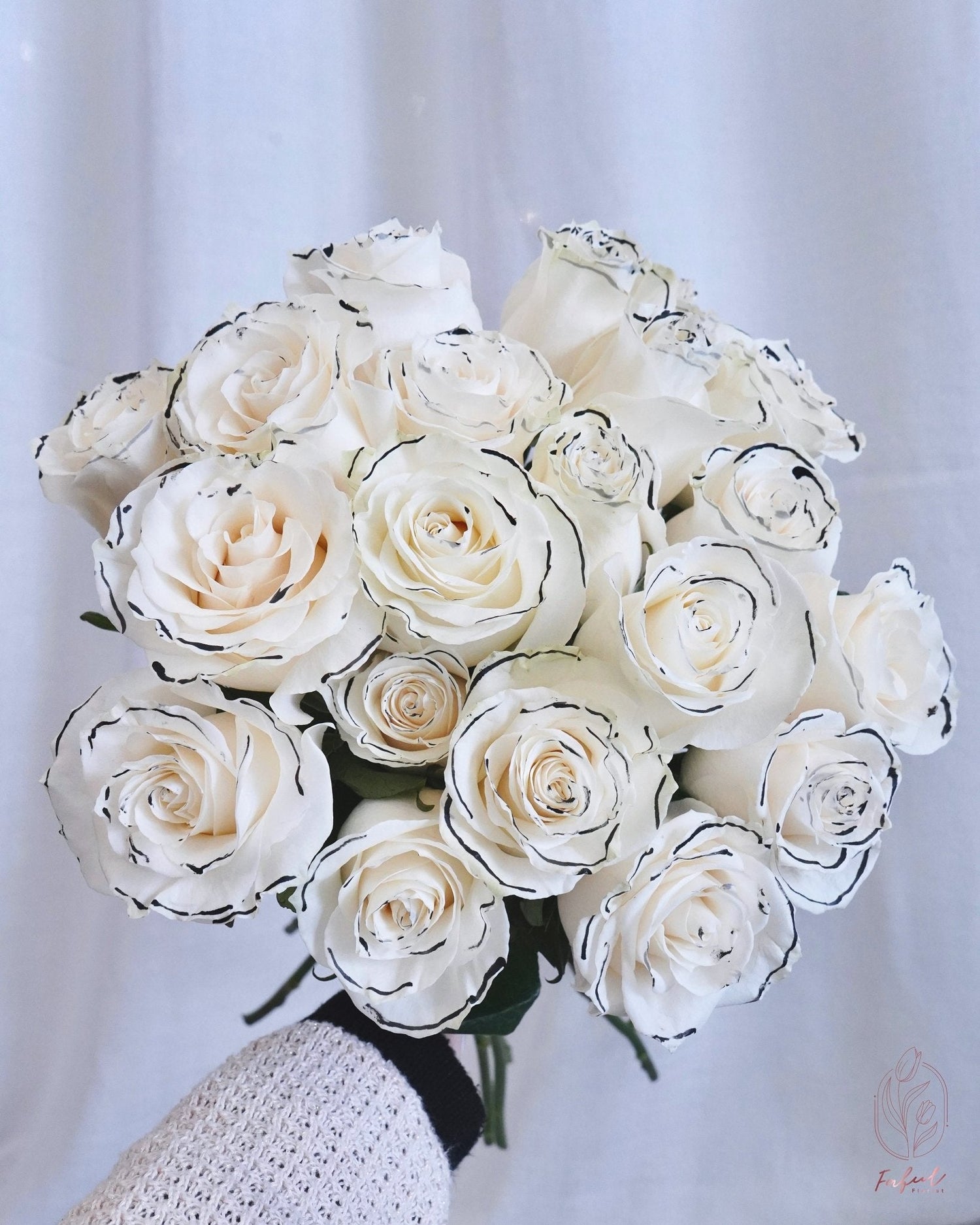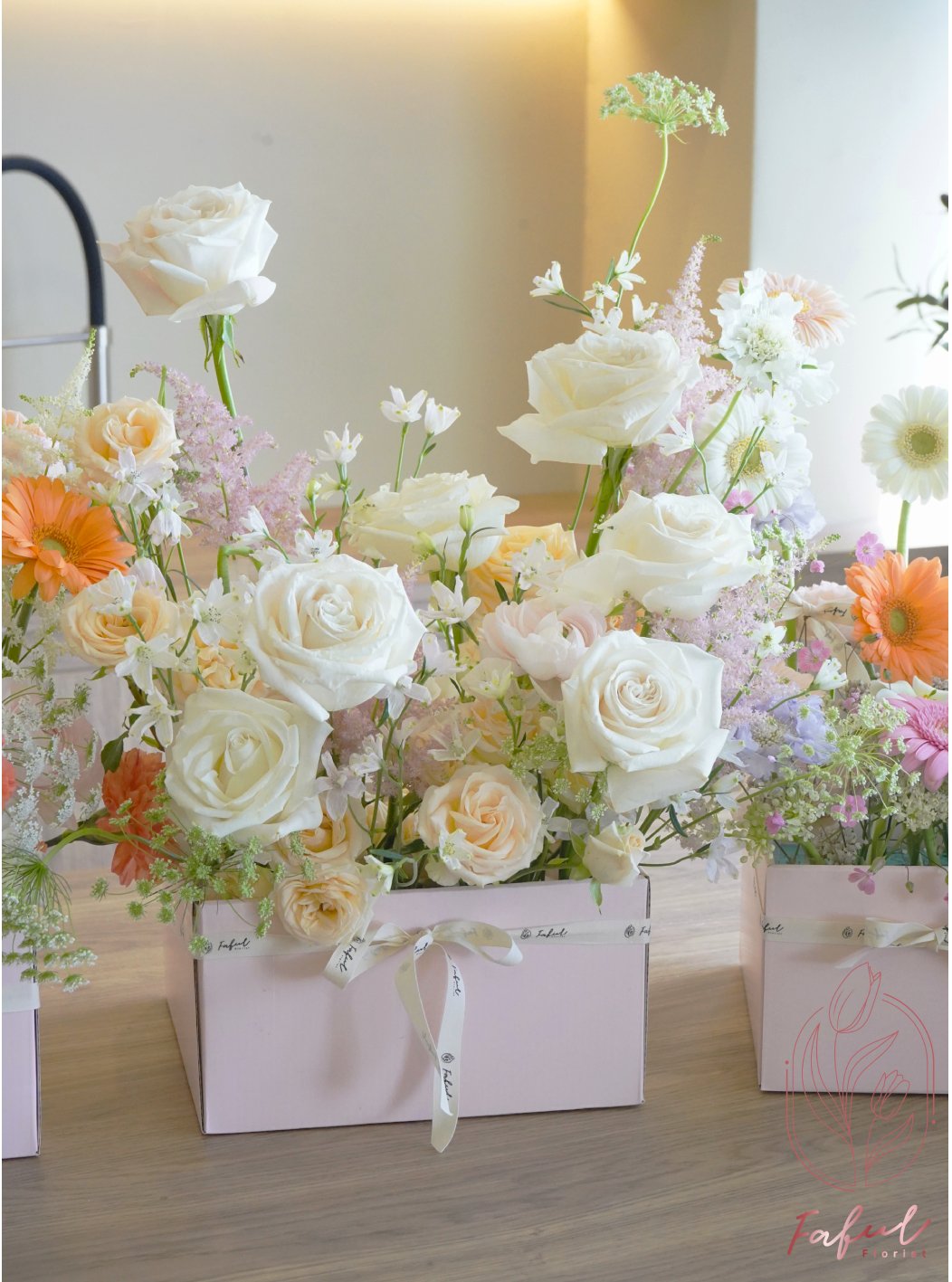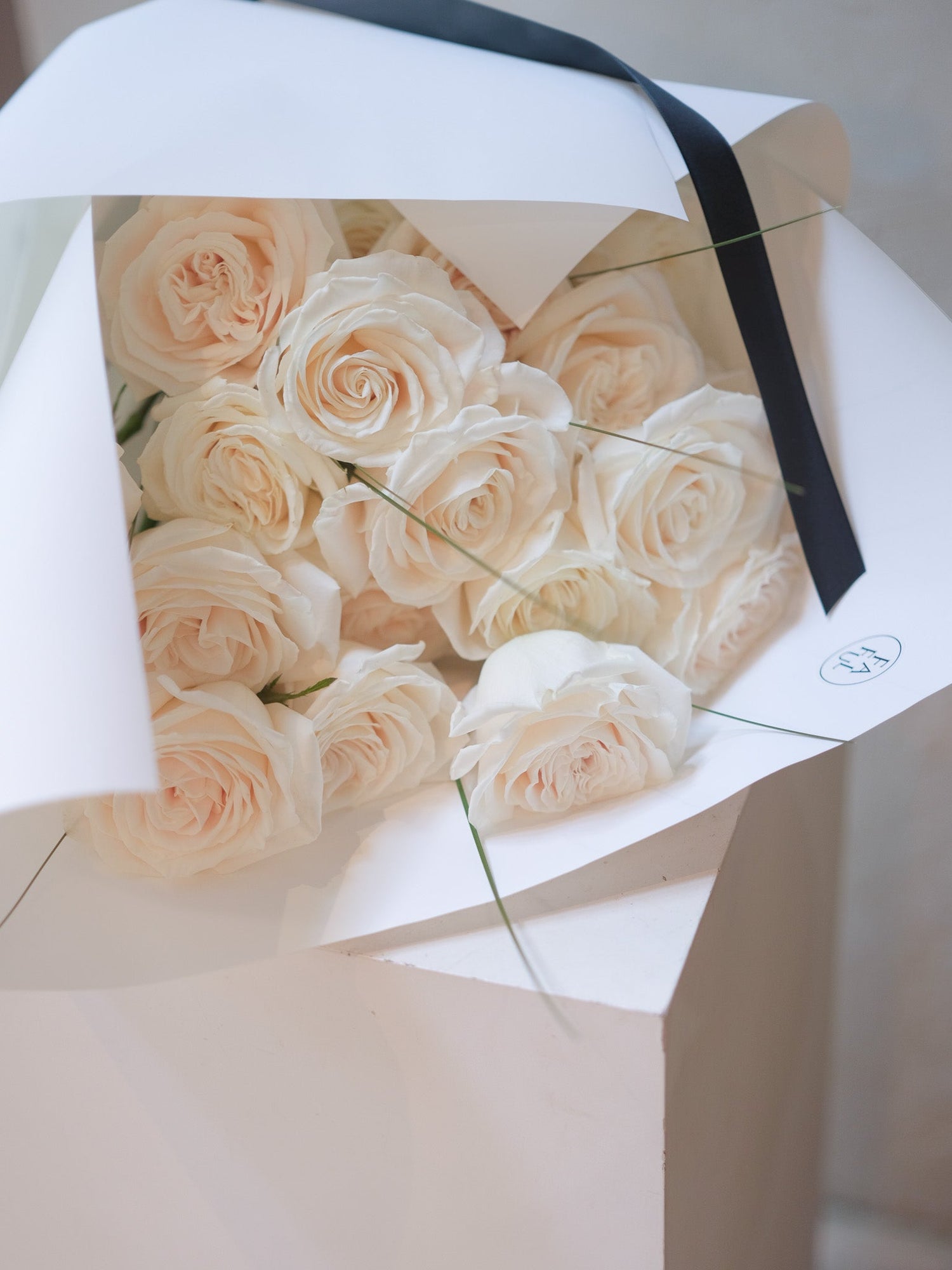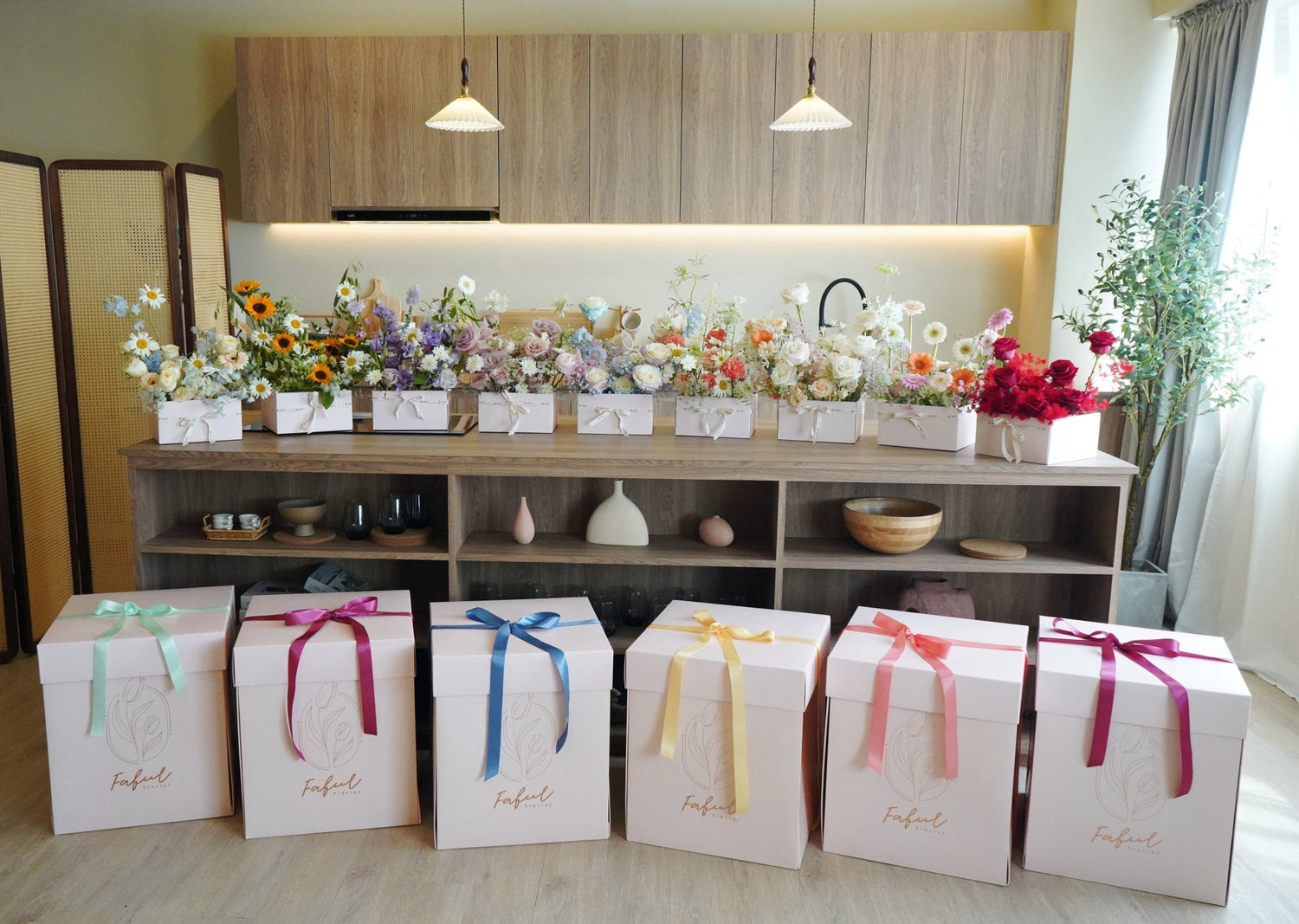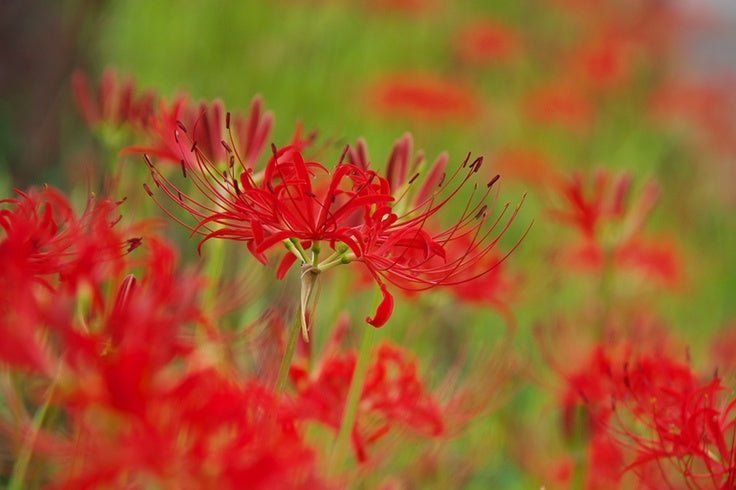
Higanbana - Truly Unlucky? Debunking Myths about its Flower Language! More Than Just the 'Death Flower'
Estimated reading time: 7 minutes
There is a type of flower that always carries a touch of mystery, poignant beauty, and even awe—the Higanbana (Red Spider Lily). Deeply rooted in East Asian culture through various legends, it is commonly found in literature, art, and anime works. So, what exactly is the "Higanbana flower meaning"? Does it represent death and separation? This article will delve into the botanical characteristics of the Higanbana, its multi-layered floral meanings, its symbolic significance in different cultures, and, incorporating a Hong Kong perspective, provide a comprehensive interpretation of this captivating flower.
What is Higanbana? Understanding the True Nature of Lycoris Radiata
Before exploring the Higanbana flower meaning, let's first get to know the plant itself. Higanbana is not its official scientific name; its most widely known name is Lycoris radiata.

Main Names and Aliases
Lycoris radiata has many names rich in storytelling:
- Higanbana (彼岸花): Derived from Japanese, related to its blooming during the Autumnal Equinox festival (Higan), and also implies a connection between this shore and the other shore (the realms of life and death).
- Manjusaka (曼珠沙華): From Sanskrit, originally one of the four celestial flowers in Buddhism, referring to red or white lotus flowers, symbolizing auspiciousness and purity. Later, Japanese culture borrowed this name for Lycoris radiata (Higanbana), imbuing it with meanings of 'awakening past life memories' and 'samsara' (cycle of life and death).
- Red Flower Lycoris (紅花石蒜): Emphasizes its bright red flower color.
- Dragon's Claw Flower (龍爪花): Describes the recurved petals and extended stamens.
- Cockroach Flower (蟑螂花), Crow Garlic (老鴉蒜): More rustic folk names, possibly related to its growing environment or the smell of its bulbs.
- Dead Man's Flower (死人花), Ghost Flower (幽靈花), Hell Flower (地獄花): Related to its frequent growth near cemeteries and the imagery of death and separation in its flower meaning.
- English Names: Red Spider Lily, Hurricane Lily (as it often blooms around the typhoon season).
In Hong Kong, people might be more familiar with the name "石蒜" (Lycoris), especially in horticultural or botanical discussions.

Botanical Characteristics
Lycoris radiata belongs to the Amaryllidaceae family, genus Lycoris, and is a perennial herbaceous plant. Its most striking feature is the growth habit where "flowers and leaves never meet":
- Flowering Period: Usually blooms in late summer to early autumn (around August to September, corresponding to the seventh lunar month). The flower stalk emerges from the bare ground, topped with 4 to 7 flowers in an umbel-like inflorescence. The most famous color is bright red, but there are also white, yellow, and other varieties. The petals are narrow and recurved outwards, with long, protruding stamens, creating a bewitching and unique form.
- Leaf Period: The leaves begin to grow only after the flowers have withered. The leaves are linear, dark green, slightly thick, and resemble garlic or chive shoots. The leaves grow in winter and wither by late spring or early summer of the following year, entering a dormant period until the next flowering season.
This unique life cycle itself adds connotations of separation and missed opportunities to the Higanbana flower meaning.

Distribution and Growing Environment
Lycoris radiata is native to the Yangtze River basin in China and later spread to Japan, Korea, and even as far as the United States. They prefer slightly shady, moist, well-drained environments and can often be found on hillsides, field ridges, stream banks, under forests, and even around cemeteries. Their bulbs contain alkaloids and are somewhat toxic, which is one reason why ancient people planted them near graves or field edges to deter rodents and ants or prevent animals from eating the bulbs.
In-depth Exploration: The Multifaceted Meanings of Higanbana
The Higanbana flower meaning is extremely complex and full of contradictions, closely related to its cultural background, folklore, and botanical characteristics. It is not simply a "flower of death" but encompasses multiple aspects from despair to hope.
Sad and Negative Flower Meanings
- Death, Separation, Sad Memories: This is the most widely known meaning. Due to its frequent blooming around the Autumnal Equinox (Japan's Higan festival, a time for ancestor worship) and its association with cemeteries, it naturally evokes thoughts of the separation of yin and yang, life and death. The characteristic of flowers and leaves never meeting also symbolizes irretrievable missed chances and eternal longing.
- Call of Hell, Path to Death: In Japanese legends, Higanbana is believed to be the flower that blooms along the path to the underworld, guiding souls to reincarnation. Therefore, it is also called "Dead Man's Flower" or "Hell Flower."
- Despair, Hopeless Love: Due to the separation of flowers and leaves, it symbolizes a tragic love where lovers cannot be together and are destined for separation.
- The Devil's Tenderness: Even in its negative imagery, there's a touch of poignant beauty. The blood-red color is both dangerous and alluring.

Positive and Hopeful Flower Meanings
- Beauty, Purity: Derived from its Sanskrit name "Manjusaka," it is considered a celestial flower in Buddhism, carrying connotations of purity and sanctity.
- Passion, Independence: The bright red color also represents ardent emotions, and its solitary blooming, without the need for green leaves as a foil, symbolizes an independent personality.
- Hope for Reunion, Hope for Reincarnation: Although flowers and leaves are separated, it also implies the cycle of life. After withering, green leaves are reborn; after the leaves die, the flower stalk reappears. This can be interpreted as an expectation of reunion or hope for meeting in the next life.
- Guidance, Direction: Although there's the saying of guiding to the underworld, it can also be understood as providing direction in confusion, guiding people towards a new beginning or understanding.
- Resilience, Rebirth: Its ability to bloom in relatively barren environments and undergo cycles of withering and rebirth demonstrates tenacious vitality.
Neutral Flower Meanings
- Mutual Longing: Especially in Korean legends (discussed later), Higanbana (Lycoris) symbolizes an emotion of deep mutual longing despite being unable to meet.
- Impermanence: The cycle of blooming and falling flowers, leaves growing and withering, reflects the natural law of impermanence and the flow of life.
The key to understanding the Higanbana flower meaning lies in recognizing its polysemy. The emotions it represents often depend on the viewer's state of mind, cultural background, and specific context. It is both a flower of ending and a flower of beginning; a flower of separation and a flower of longing.

Cultural Perspectives: The Significance of Higanbana in East Asia
The symbolic meaning of Higanbana (Lycoris radiata) has commonalities as well as subtle differences across East Asian countries, profoundly influencing the local understanding of the Higanbana flower meaning.
Mainland China
In China, although Lycoris radiata is a native plant, the names "Higanbana" and "Manjusaka" are more influenced by Buddhist culture and Japanese culture. Traditionally, people might have focused more on its medicinal value (note: it is toxic and requires professional handling) or its use as an insect-repelling plant.
- Longing and Separation: The characteristic of flowers and leaves never meeting easily leads to interpretations of longing for distant relatives or lovers, and the sadness of separation.
- Auspiciousness and Misfortune: Some regions consider red to be auspicious, but others believe its growing environment (like cemeteries) and appearance (like blood-red) carry ominous signs.
- Buddhist Connotations: Manjusaka, as a flower in Buddhist legends, possesses a certain sanctity, connected to concepts like reincarnation and karma.
Japan
Japan is the country where Higanbana culture is most prevalent, and the name "Higanbana" originates here. Its symbolic meaning is closely linked to Japanese views on life and death and memorial culture.
- Higan (彼岸): Directly related to the ancestor worship activities during the Autumnal Equinox festival (Higan), it symbolizes the connection between the world of the living and the deceased.
- Cemetery Flower: Due to being often planted around cemeteries, coupled with associations with death, many consider it an unlucky flower and even avoid bringing it home.
- Missing the Deceased: Despite the ominous impression, in specific contexts, Higanbana also represents deep longing for deceased relatives.
- Ominous Sign: Folk superstition believes that seeing Higanbana may foretell death or unfortunate events.
- Common Motif in Literature and Art: Its strong visual image and rich symbolic meaning make it a frequent guest in Japanese literature, waka poetry, painting, and anime, used to create an atmosphere of sadness, mystery, or fate.

Korea
In Korea, Lycoris radiata is called "상사화" (Sangsahwa), meaning "Mutual Longing Flower." This name originates from a poignant love legend:
- Legend of Sangsahwa: The story tells of a monk and a woman who fell in love but could not be together due to their disparate statuses. After their deaths, they transformed into the flower and the leaf, never to meet, only to long for each other. Therefore, in Korea, the primary flower meaning of Lycoris radiata symbolizes a tragic love unable to meet, with a strong sense of longing. The characteristic of flowers and leaves never meeting is used to metaphorize the sorrow of fated separation.
- Common in Temples: Unlike the cemetery association in Japan, Lycoris radiata is often planted around temples in Korea, further enhancing its connection with Buddhist culture and a touch of sanctity.
Taiwan
In Taiwan, Lycoris radiata is not a native plant but an introduced naturalized species from mainland China and other places, now widely distributed across Taiwan. It is called by various names, including Golden Spider Lily (for the golden-yellow flowered *Lycoris aurea*) and Red Spider Lily. The name "Higanbana" and its associated flower meanings have also spread due to Japanese cultural influence, but perhaps not as commonly equated with misfortune as in Japan.
Hong Kong
In Hong Kong, Lycoris radiata (Higanbana) is not a very common horticultural plant, but there are small-scale introductions or sightings in some rural areas. Hong Kong citizens' understanding of the Higanbana flower meaning mostly comes from Japanese anime, literature, or online information. Therefore, the general impression may lean towards the Japanese cultural imagery of death, separation, poignant beauty, etc. However, with the flow of information, its Buddhist connotation as "Manjusaka" and the Korean interpretation as "Mutual Longing Flower" are also gradually becoming known to some.

Higanbana in Popular Culture: Interpretations in Anime and Literature
The unique charm of the Higanbana flower meaning and its strong visual impact have made it a favorite in popular culture, especially in Japanese anime, manga, and literary works. Creators often use the imagery of Higanbana to enhance atmosphere, hint at characters' fates, or deepen themes.
Applications in Anime and Manga
- Symbol of Death and the Underworld: This is the most common usage. When depicting the boundary between life and death, the path to the underworld, or scenes related to death, large fields of blooming red Higanbana often appear in the frame, for example, in certain plots of "Hell Girl," "Inuyasha," or scenes involving demons in "Demon Slayer: Kimetsu no Yaiba."
- Foreshadowing Tragedy or Separation: When characters face life-and-death partings, irretrievable losses, or fated tragic destinies, Higanbana often appears as a visual symbol, reinforcing a sense of fate and sorrow. For example, in "Tokyo Ghoul," Higanbana appears multiple times, associated with the protagonist's struggles and transformations.
- Representing Ominousness or Danger: The appearance of Higanbana sometimes also implies the approach of danger or the presence of evil forces. Its blood-red color and eerie form can effectively create tension and unease.
- Symbolizing Longing and Bonds: Although less common, some works use the "flowers and leaves never meet" characteristic of Higanbana to express the inseparable longing and bonds between characters even when separated, echoing its meaning as "Mutual Longing Flower."
- Pure Visual Aesthetics: Sometimes, the use of Higanbana may be solely for its unique aesthetic value; its vibrant colors and bewitching form can add a strong visual impact to the screen.
Examples are numerous, including "Dororo," "Mushishi," "Natsume's Book of Friends," and many other works where Higanbana can be found, with its specific symbolic meaning varying according to the plot's needs.

Imagery in Literature and Poetry
In literary works, especially poetry, Higanbana is also a common vehicle for conveying complex emotions.
- Expressing Grief and Mourning: Poets often use Higanbana to express sorrow and remembrance for deceased friends and relatives, creating a poignant and melancholic mood.
- Describing Hopeless Love: The characteristic of flowers and leaves separating serves as an excellent metaphor for describing lovers who cannot be together and tragic love stories.
- Exploring Philosophical Thoughts on Life and Death: The symbolic meaning of Higanbana connecting the realms of life and death makes it an introduction to exploring philosophical themes such as the cycle of life and the meaning of existence.
- Creating a Mysterious Atmosphere: Its association with legends and the underworld is also often used to create a mysterious and eerie story atmosphere.
In summary, Higanbana in popular culture is not just a plant but a powerful cultural symbol, carrying the imagination and emotional projection of creators and audiences regarding eternal themes such as life and death, parting, longing, and fate. Understanding the Higanbana flower meaning helps to interpret the connotations of these cultural works more deeply.

Clarifying Myths: Common Misconceptions About Higanbana Flower Meaning
There are some common myths or one-sided understandings surrounding the Higanbana flower meaning. Clarifying these misconceptions helps us to view this plant and its cultural connotations more comprehensively and objectively.
Misconception 1: Higanbana Only Represents Death and Misfortune
Fact: Although death and separation are the most widely known parts of Higanbana's flower meaning, especially reinforced by Japanese cultural influence, this is not its entire significance. As mentioned earlier, it also includes multiple positive or neutral meanings such as beauty, purity (Manjusaka), mutual longing (Sangsahwa), passion, independence, hope for reunion, guidance, and resilient rebirth. Simply equating it with a "flower of death" or "flower of misfortune" is a simplification of its rich connotations.
Misconception 2: Higanbana is a Flower from Hell
Fact: Sayings like "Hell Flower" or "flower on the road to the underworld" mainly originate from Japanese folklore and literary imagination, linking it to hell in Buddhism or Yomi (the underworld) in Shintoism. This is a cultural interpretation, not a botanical or universally accepted fact. In original Buddhist teachings, "Manjusaka" is a celestial flower, symbolizing auspiciousness. Completely demonizing it ignores its sacred aspect.
Misconception 3: Higanbana is Ominous Because It's Toxic
Fact: There is no necessary direct link between a plant's toxicity and its symbolic meaning. Many common ornamental or medicinal plants have varying degrees of toxicity (e.g., azaleas, oleanders, daffodils), but their flower meanings are not necessarily negative. The ominous impression of Higanbana comes more from cultural associations triggered by its growing environment (cemeteries), flowering season (Higan festival), and the characteristic of flowers and leaves never meeting.

Misconception 4: All Red Lycoris Plants are Higanbana
Fact: Although the Higanbana we often refer to is Lycoris radiata (Red Spider Lily), the genus Lycoris also includes other varieties with red or reddish flowers, such as *Lycoris sprengeri* (flowers are pink with bluish-purple tips). Additionally, there are yellow-flowered *Lycoris aurea* (Golden Spider Lily), white-flowered *Lycoris albiflora*, etc. They each have different scientific names and potentially subtle differences in flower meaning. While broadly they might sometimes be associated with some imagery of Higanbana, strictly speaking, "Higanbana" primarily refers to Lycoris radiata.
Misconception 5: Touching Higanbana Will Bring Bad Luck
Fact: This is purely superstition. Touching Higanbana itself will not bring any supernatural bad luck. The toxicity of Lycoris radiata mainly comes from ingesting the plant or bulbs; skin contact is usually harmless, with only a few sensitive individuals needing to be cautious about possible mild irritation from the sap. As long as physical safety precautions are taken, touching the plant poses no mystical danger.
When understanding the Higanbana flower meaning, it is important to distinguish between the plant's own characteristics, scientific facts, legends and interpretations from different cultural backgrounds, and symbolic techniques in literary and artistic works. Avoiding viewing any single interpretation as the sole truth allows one to appreciate its complex and fascinating entirety.

To learn more about flower information, feel free to visit our online florist and explore a whole new world of flowers!

